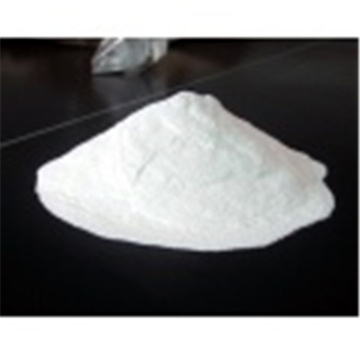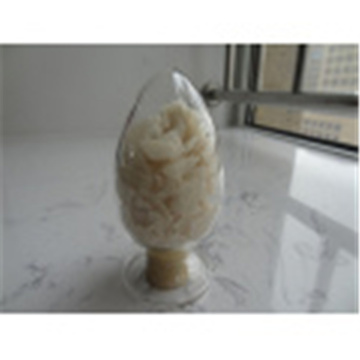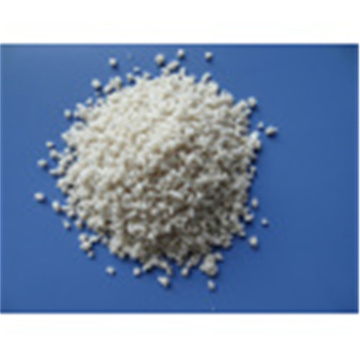Whiskers are acicular or fibrillar crystals with very small diameters and virtually no defects. Due to their inherent integrity, highly ordered atomic arrangements make the intensity close to the theoretical value of the crystal—the strength of interatomic valence bonds. . And because of its unique characteristics of high temperature resistance, friction resistance, corrosion resistance and high strength modulus, it is used as a resin, metal and ceramic reinforcing and toughening materials showing excellent physical and chemical properties.
The use of inexpensive basic Magnesium Chloride whiskers as a filler for hot melt adhesives can effectively improve the hot melt adhesive's processability, 180° peel strength, weatherability, and other properties. Especially in the low temperature than the commonly used light-weight calcium carbonate as a filler hot melt adhesive has greatly improved the performance. The results of the study indicate that the use of basic magnesium chloride whiskers as fillers will further broaden the application of hot melt adhesives.
1 Experimental section
1. . 1 The main raw materials EVA28/400, EVA28/150 (Ethylene-vinyl acetate copolymer), H-100 (petroleum resin), titanium dioxide, light calcium carbonate, basic magnesium chloride whiskers.
1.2 Experimental apparatus and equipment Box-type resistance furnace SX-4-10, refrigerator, D-8401 multi-functional mixer, asphalt softening point tester, rubber "A" hardness tester.
1.3 Experimental Methods
1.3.1 Surface Modification of Basic Magnesium Chloride Whiskers Add silane or titanate coupling agent with 0.5% basic magnesium chloride whisker mass to acetone or alcohol, stir and dissolve, then add basic magnesium chloride crystals. After stirring vigorously, heat to distill acetone or alcohol.
1. 3.2 Preparation of hot melt adhesive
(1) According to the formula of hot melt adhesive for wood furniture, the surface treated whiskers are used instead of light calcium carbonate as the filler, EVA is used as the matrix, H-100 is the tackifier, and TiO2 is the brightener. EVA and H-100 are mixed and heated to melt, then basic magnesium chloride whiskers and titanium dioxide are added, and the mixture is evenly mixed and cooled.
(2) Using orthogonal test method, change the proportion of whiskers, light calcium carbonate and silica, and obtain the hot melt adhesive according to the method in (1).
1.4 Performance Test
The softening point refers to the starting temperature of the hot melt, which can be used as a measure of the heat resistance, ease of melting, and gelation time of the glue. The softening point is commonly measured by the ring and ball method. The equipment used is a softening point tester. Repeat the determination twice for each sample, and repeat the test if the measured values differ by more than 4°C.
The hardness was measured at room temperature using a rubber hardness tester.
180 ° peel strength According to GB/T2792-1998 test.
Low-temperature resistance The sample was placed in a refrigerator, placed at a constant temperature of -15oC for 4 h, and then the sample was taken out, placed at room temperature for 1 d, the peel strength was measured, and the low-temperature resistance of the hot melt adhesive was observed.
Curing speed The sample is first melted and made into sheets of the same thickness and the same size. Preheat at 160 °C for 5 min to melt, and then use a stopwatch at room temperature to record the curing time of the glue, which is the curing speed.
2 Results and Discussion
2.1 Effect of Different Fillers on EVA Hot Melt Adhesive The maximum amount of hot melt adhesive filler is generally 10% of the adhesive. Based on this amount of addition, EVA hot-melt adhesives were prepared using the light-weight calcium carbonate and basic magnesium chloride whiskers commonly used as fillers for hot-melt adhesives as fillers, and the properties are shown in Table 1.
2.1. Effect on Adhesive Adhesion Performance The 180-degree peel strength of the adhesive was measured as the adhesive strength of the adhesive. That is, the adhesive 180. The higher the peel strength, the greater the adhesion of the adhesive. From Table 1, it can be seen that the EVA hot melt adhesive filled with basic magnesium chloride whiskers has a higher 180° peel strength than the same adhesive filled with light calcium carbonate at the same filling amount, indicating that the basic magnesium chloride whiskers are Filler hot melt adhesives have 10% greater adhesion than lighter calcium carbonate fillers.
According to DH Kaeble's research, tensile stress and shear stress are simultaneously applied to the fractured adhesive surface during the peel test. Since the whiskers are microfibrillar, the contact area with the substrate in the adhesive is large, and the whisker strength is high. Therefore, compared with the spherical lightweight calcium carbonate, not only the tensile and shear strengths are increased, but also the adhesive cohesive force is obtained. Creep retention increases.
2.1.2 Impact on Weatherability of Adhesives Many parts of automobiles, ships, and airplanes are adhesively bonded or fixed. Because hot melt adhesives do not use any volatile solvents and have excellent properties, they are used more and more widely. However, weather resistance and heat resistance of adhesives are one of the main factors that affect the effectiveness of adhesives because many adhesive products require long-term use at lower or higher temperatures. As can be seen from Table 1, the low-temperature resistance of the hot-melt adhesive with the basic magnesium chloride whisker as the filler is l times higher than that with the light-weight calcium carbonate as the filler.
2.1.3 Effects on other properties Table 1 shows that the basic magnesium chloride whiskers and the hot melt adhesives with light calcium carbonate as fillers have similar softening point and solidification speeds, and are within the scope of the adhesive processing requirements. within. The hardness of the adhesive of the basic magnesium chloride whisker as a filler is 5% higher than that of the light calcium carbonate filler.
2.2 Effect of Composite Fillers on the Performance of EVA Hot Melt Adhesives Light weight calcium carbonate is an inorganic filler commonly used in the manufacture of hot melt adhesives, and hot melt adhesives with basic magnesium chloride whiskers as described above have excellent performance. In order to improve the performance of hot-melt adhesives and reduce costs, the two kinds of fillers were compounded to prepare hot-melt adhesives for research. Orthogonal test table and results are shown in Table 2. From Table 2, we can see:
(1) The best level of hardness is A1 B2 C1. From the analysis of range R3j, B factor has a greater influence on the softening point and a greater impact on the experiment.
(2) The best level of peel strength is A2B2C1. From the analysis of range R1j, factor B has the greatest influence on the peel strength performance.
(3) The optimum level of softening point is A1B1C2. From the analysis of range R2j, the influence of the three factors on the softening point is not much different. From the range analysis, A and B have a greater influence on the softening point than C.
(4) The optimum level of cure speed is A1B1C2 or A2 B1C2. From the extreme R4j analysis, the B and C factors have a greater impact on the curing speed.
(5) For the weather resistance, the best levels are A1B2 C2 and A2B2C1. That is, the addition of basic magnesium chloride whiskers increases the adhesive weatherability.
From Table 1 and Table 2, it can be seen that when the basic magnesium chloride whiskers and the light calcium carbonate are mixed and used as a hot-melt adhesive composite filler, various properties are greatly improved over single use, and various performance indexes are matched with basic magnesium chloride. With the increase of the whisker addition amount, the basic magnesium chloride whiskers and the light calcium carbonate have obvious synergistic effects when mixed in the hot melt adhesive.
3 Conclusions (1) The hot melt adhesive with basic magnesium chloride whiskers as filler has higher 180° peel strength, hardness and low temperature resistance than hot melt adhesive with light calcium carbonate as filler.
(2) When the basic magnesium chloride whisker and the light calcium carbonate are mixed and used as a hot melt adhesive composite filler, there is a clear synergistic effect, which has a better effect than using any one of the fillers alone.
(3) Basic magnesium chloride whiskers are excellent fillers for hot melt adhesives. Hot melt adhesives with basic magnesium chloride whiskers have a high 180° peel strength, excellent weather resistance, and suitable hardness. Will be further broadened.






